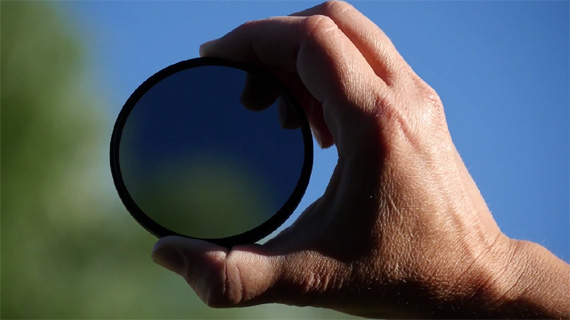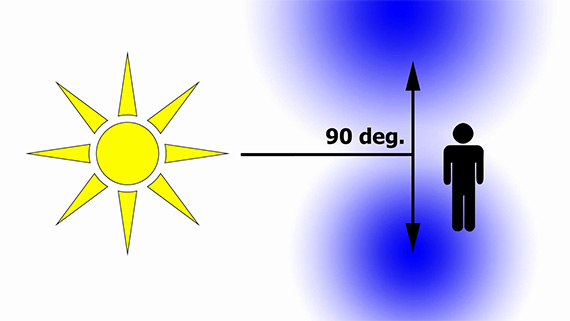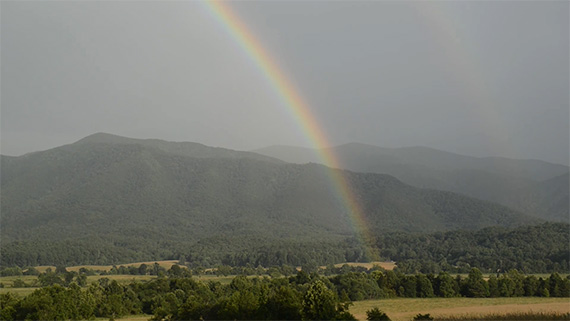If you think investing in a polarizing filter is a bad idea, photographer Steve Perry wants to prove you wrong. Perry explains the fundamental reasons why, as a nature photographer, you absolutely need to have one of these filters in your bag at all times. Even though you might be tempted to Photoshop your way to glory, there are certain things that even the mighty photo editing tool is incapable of handling. So without further ado, let’s hear it:
Polarizers Are Not Just for Blue Skies
One of the biggest misconceptions that people have about polarizers is that they are only meant to make blue skies appear bluer. Well, that’s just one way to use them.
Polarizers have a much wider usability. The primary reason why polarizers are considered indispensable by nature photographers is that they take reflections off of any surface. They are particularly great when that surface is non-metallic. Leaves (especially when they are wet), water, flowers—anything will reflect light. With a polarizer, you can cancel all of that out. In effect, you capture the information and not the glare, thus saturating the colors, making blue skies appear bluer than ever, and capturing astonishing fall colors.
Why Can’t You Just Use Photoshop?

Polarizers preserve details in water and saturate colors.
When the glare off a surface is cancelled out, underlying information such as details on the surface, colors, etc. are revealed. When you photograph something that produces a lot of glare without using a polarizer, you only capture the glare and not the underlying information. Simply put, if the information is not there in the picture to start off, it can’t be salvaged using Photoshop.
The Trade Off of Using a Polarizer

A polarizing filter will, on average, block two stops of light.
On an average, a polarizer will block about two stops of light. When you use a polarizer, take that into consideration and adjust the exposure.
The Best Ways to Use a Polarizing Filter
Before you head for your favorite store to buy a polarizer, here are a few more tips on the best ways to use them:
- There are two types of polarizers available. For a DSLR, you need the circular variety.
- The basic way to use a polarizer is to rotate the front element. It rotates to allow you to dial in the amount of polarization you need. Simply turn it till you think you have the best results.
- Always use polarizing filters when the sun is out and it is a fairly clear blue day. If it is hazy—even better!
- Ideally, the sun should be at an angle of 90 degrees to where you are standing.

Polarizing filters work best when your subject is at a 90 degree angle from the sun.
- Polarizing filters work best when they are used with lenses longer than 35mm.
- If you are into panoramas, try not to use a polarizer.
- If you are photographing vegetation, waterfalls, or anything non-metallic that shines, the polarizer will do a great job of cutting down reflections, bringing out details, and saturating colors.
- Polarizers work great with rainbows by saturating the colors.

Polarizers are great for bringing out the colors in rainbows.
- If you have a wide angle lens, choose a polarizing filter that is thin to avoid vignetting at the corners.
Do you have a polarizing filter? What do you use it for?
Like This Article?
Don't Miss The Next One!
Join over 100,000 photographers of all experience levels who receive our free photography tips and articles to stay current:






Great video – many thanks. Straightened out a lot of the folklore and hearsay about these valuable filtersa
Well-done informative tutorial — thank you!
WOW!! VERY POWERFUL IMAGES . I JUST STARTED USING A POLARIZER AND IT DOES MAKE A BIG DIFFERENCE IN HOW MY PICTURES TURNED OUT. THANKS FOR SHARING YOUR VIDEO.
muchas gracias por compartir esta información sobre el filtro polarizado
Thank you for that useful information, for I don’t usually carry it in my bag but after watch your short video it will be in my bag permanently.
Can you tell me where the first waterfall picture was taken at? Love that shot.
I believe the waterfall pictured is Upper Bond Falls, in Paulding, Upper Penninsula Michigan. My favorite waterfall in Michigan.